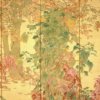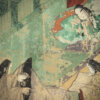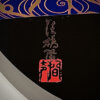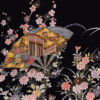Himejima Chikugai: A Leading Figure of Kansai Nanga Artists Active in the Meiji and Taishō Periods.
Sparrows Enjoying Peonies
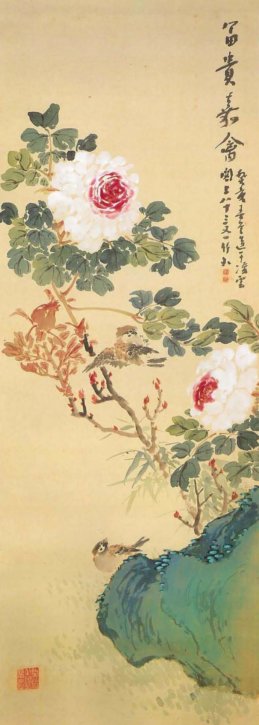
Himejima Chikugai (1840-1928) was born as the son of a vassal of the Kuroda family in the Fukuoka domain in Chikuzen. He loved paintings from an early age and is said to have studied paintings under Murata Tōho and Ishimaru Shungyū. He studied painting as an extra skill for the warrior class, and during the turbulent period at the end of the Tokugawa Shogunate, he worked hard on national affairs in the service of the feudal lords and was praised for his military fame. After the restoration, he moved to Ōsaka and entered the path of painting that he learned as an extra skill, and became reputed as the master of the Ōsaka painting industry and the authority of the Kansai Nanga painter. In 1918, he founded the Chikugai Nangain and devoted himself to teaching the younger generation. His pupils were Yamada Shūhei, Mizuta Chikuho, and others. In 1928, he died at an advanced age, 89 years old.
Chikugai skillfully painted landscapes, portraits, flowers and birds, and animals, but it is said that he was particularly good at landscapes and flowers-and-birds. However, it is rare to see Chikugai’s works today. Although he must have left behind a considerable number of works during his long life, many of them have probably been buried, likewise Chikugai’s name which has been forgotten. The elaborate sketching of his paintings in his prime to middle years is astonishing, but in his later years, his style became rough. He warns his pupils himself by saying that enthusiastically draw works in youth, and when the technique is finally ripe and then shift to rough, work with natural tastes would be completed.
This painting, titled “Fūkikakinzu” is known to have been painted in the spring of 1923, when he was 84 years old. Although it was created only five years before his death, it is quite a powerful work, and tries to show the mental strength he had developed through martial arts in his youth and his physical strength still thriving even in old age. The two sparrows frolicking with a peony blooming in the shade of a rock gives a sense of tranquility. The depiction by the *tsuketate technique gives the impression of a peaceful scene on a heartwarming spring day. The touch of pale green around the rocks is really innovative and interesting.
-
Tsuketate: One of the typical techniques of Japanese painting that does not draw the outlines but do with one brushwork containing light and shade, two types of Sumi inks or paints simultaneously at once so that the result can express the shade and the stereoscopic effect, which can be often seen in Maruyama and Shijō schools.

